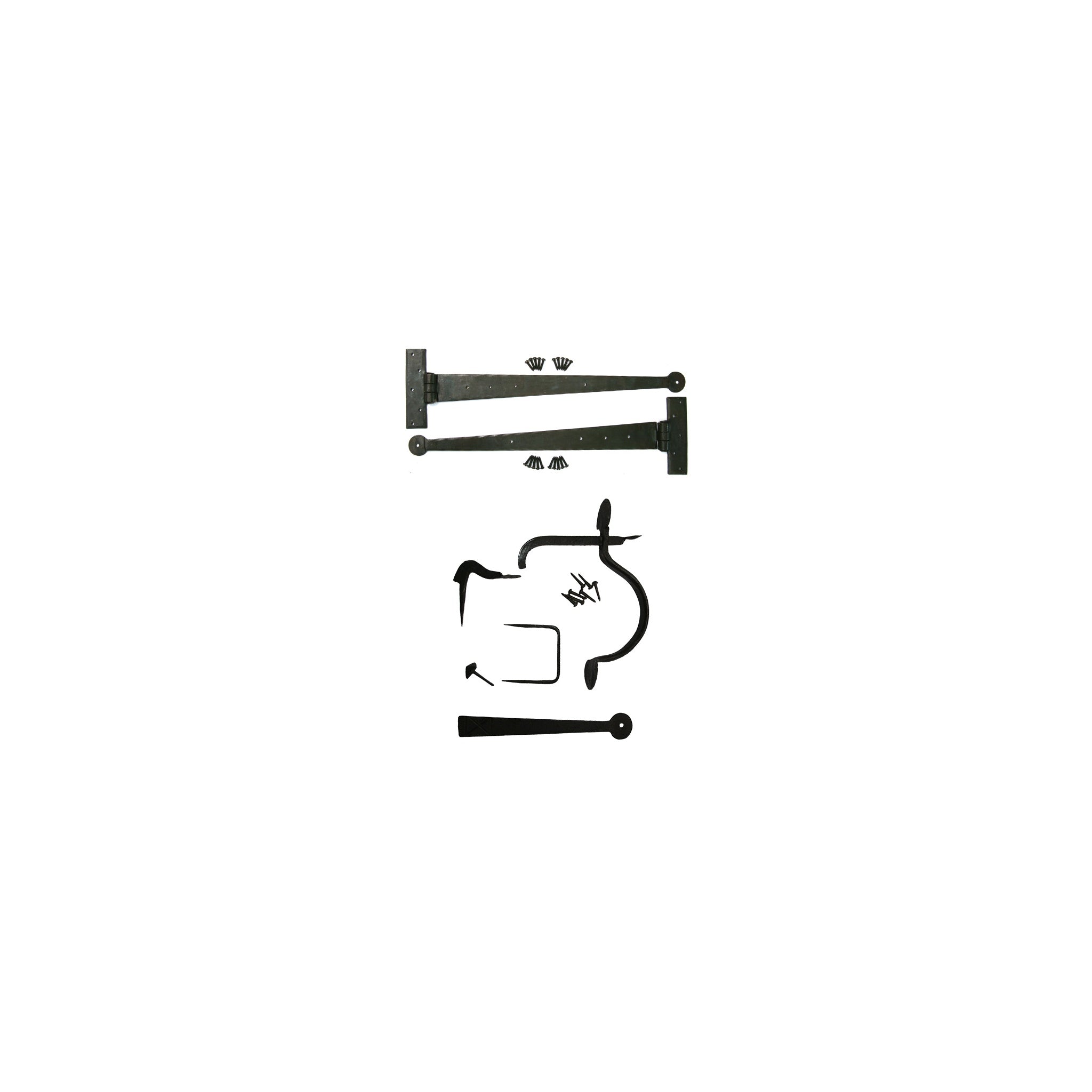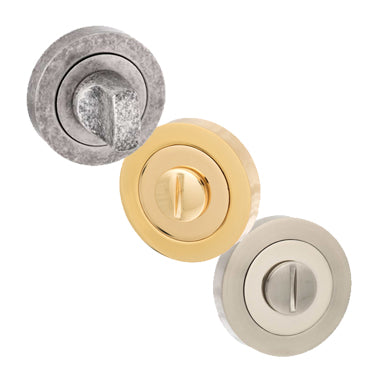

| Key Takeaway | Description |
|---|---|
| Hinge Type | Choose the appropriate hinge type based on your door's size, weight, and function, such as butt hinges, flush hinges, or concealed hinges. |
| Hinge Size | Select the correct hinge size to ensure proper door support and smooth operation, considering factors like door thickness and weight. |
| Hinge Material | Opt for hinges made from durable, high-quality materials like brass, stainless steel, or chrome, depending on your preferences and the door's location. |
| Fire Rating | For fire doors, use hinges with the appropriate fire rating, such as FD30 or FD60, to ensure compliance with building regulations and maintain the door's fire resistance. |
| Aesthetics | Choose hinges that complement your door's style and finish, whether it's a traditional or contemporary look, to create a cohesive appearance. |
Understanding Hinge Types
When selecting hinges for your internal doors, it's essential to understand the different types available and their specific applications. Some common hinge types include:
- Butt Hinges: The most common type of hinge, butt hinges are suitable for most standard internal doors. They consist of two rectangular leaves that are mortised into the door and frame, allowing the door to swing open and closed.
- Flush Hinges: Also known as recessed or mortise hinges, flush hinges are designed to fit within a cutout in the door and frame, creating a seamless, streamlined appearance. They are ideal for contemporary or minimalist interiors.
- Concealed Hinges: As the name suggests, concealed hinges are hidden from view when the door is closed. They are installed within the door and frame, offering a clean, modern look and improved security.
| Hinge Type | Application | Installation Tips |
|---|---|---|
| Butt Hinges | Standard internal doors, suitable for most applications | - Mortise hinges into door and frame for a flush fit - Ensure hinges are properly aligned and level - Use appropriate screws for secure attachment |
| Flush Hinges | Contemporary or minimalist interiors, creates a seamless appearance | - Carefully measure and cut recesses for hinges - Ensure hinges are flush with door and frame surface - Use templates or jigs for precise installation |
| Concealed Hinges | Modern interiors, improved security, hidden from view | - Follow manufacturer's instructions for installation - Ensure proper alignment and clearance for smooth operation - Adjust hinges as needed for optimal functionality |
| Self-Closing Hinges | Doors that require automatic closing, such as fire doors or entrance doors | - Choose hinges with appropriate closing force - Ensure hinges are installed in the correct orientation - Adjust tension as needed for desired closing speed |
| Rising Butt Hinges | Doors that need to clear thick carpets or uneven floor surfaces | - Ensure hinges are installed in the correct orientation - Adjust hinge position to achieve desired clearance - Lubricate hinges for smooth operation |
Satin Chrome 3" Butt Hinge Pair

Choosing the Right Hinge Size
Selecting the correct hinge size is crucial for ensuring your door functions properly and is adequately supported. Consider the following factors when choosing hinge size:
- Door Thickness: Thicker doors generally require larger, more robust hinges to support their weight and ensure smooth operation.
- Door Weight: Heavier doors, such as solid wood or fire-rated doors, may require hinges with a higher weight capacity to prevent sagging or misalignment.
- Door Size: Taller or wider doors may benefit from additional hinges or hinges with a larger size to distribute the weight evenly and prevent warping.
A general rule of thumb is to use one hinge for every 30 inches (76 cm) of door height, with a minimum of two hinges per door. However, always consult the manufacturer's recommendations for your specific door type and size.
4" FD30 Rated Butt Hinge - Polished Stainless Steel

Material Matters: Selecting Durable Hinges
The material of your hinges plays a vital role in their durability, functionality, and overall appearance. Some popular hinge materials include:
- Brass: Known for its durability and classic appearance, brass hinges are a popular choice for traditional and period homes. They develop a beautiful patina over time and are resistant to corrosion.
- Stainless Steel: Stainless steel hinges offer excellent strength, durability, and resistance to rust and corrosion. They are ideal for high-moisture areas like bathrooms and kitchens, as well as for heavy-duty applications.
- Chrome: Chrome-plated hinges provide a bright, polished finish that complements modern and contemporary interiors. They are easy to clean and maintain, making them a practical choice for busy households.
- Bronze: Oil-rubbed bronze hinges offer a warm, rustic appearance that suits traditional and country-style homes. They are durable and develop a unique patina over time, adding character to your doors.
Matt Antique Brass 3" Butt Hinge Pair

Fire Rating: Ensuring Safety and Compliance
When selecting hinges for fire doors, it's crucial to choose hinges with the appropriate fire rating to maintain the door's fire resistance and comply with building regulations. Fire-rated hinges are classified according to the duration of fire resistance they provide:
- FD30: Hinges rated FD30 are suitable for doors that require 30 minutes of fire resistance. These hinges are designed to maintain the door's integrity and prevent the spread of fire and smoke for at least 30 minutes.
- FD60: For doors that require 60 minutes of fire resistance, FD60 rated hinges are necessary. These hinges are constructed to withstand higher temperatures and provide extended protection against fire and smoke.
Always ensure that the hinges you select are compatible with your door's fire rating and have been tested and certified to meet the required standards.
4" Polished Brass FD30 Rated Butt Hinge

Aesthetics: Matching Hinges to Your Door Style
While functionality and safety are paramount, don't overlook the aesthetic impact of your hinge choice. Select hinges that complement your door's style, finish, and overall design to create a cohesive and polished look. Consider the following tips:
- For traditional or period-style doors, opt for classic hinge designs like butt hinges in brass or bronze finishes.
- Contemporary doors pair well with sleek, minimalist hinges in chrome or stainless steel finishes.
- Match the hinge finish to other door hardware, such as handles and locks, for a coordinated appearance.
- Experiment with contrasting finishes for a bold, eclectic look, but ensure the finishes still complement each other.
4" FD30 Rated Butt Hinge - Satin Stainless Steel

Tips for Installation
Measuring and Marking
- Measure the Door Thickness: Ensure the hinges are the correct size for your door.
- Mark Hinge Positions: Typically 5 inches from the top and 10 inches from the bottom for standard doors.
Chiselling Recesses
- Outline the Hinge: Trace the hinge on the door edge and the frame.
- Chisel Carefully: Create a recess for the hinge to sit flush with the door surface.
Securing Hinges
- Drill Pilot Holes: Prevent wood from splitting.
- Screw in Hinges: Secure the hinges firmly but avoid over-tightening.
Maintenance Tips
- Regular Checks: Ensure screws remain tight and hinges function smoothly.
- Lubrication: Apply a small amount of lubricant to the hinge pin to prevent squeaking.
Installation Steps Table
| Step | Action |
|---|---|
| Measure and Mark | Measure door thickness, mark hinge positions |
| Chisel Recesses | Outline and chisel recesses for hinges |
| Drill Pilot Holes | Prevent splitting by drilling pilot holes |
| Screw in Hinges | Secure hinges firmly but avoid over-tightening |
Antique Brass 3" Butt Hinge Pair

Conclusion
Choosing the right hinges for your internal doors involves considering various factors, including hinge type, size, material, fire rating, and aesthetics. By understanding your door's specific requirements and selecting hinges that meet those needs, you can ensure that your doors function smoothly, safely, and beautifully for years to come.
Remember to:
- Select the appropriate hinge type based on your door's function and style.
- Choose the correct hinge size to support your door's weight and size.
- Opt for durable, high-quality materials that suit your door's location and requirements.
- Ensure fire-rated doors have hinges with the appropriate fire rating.
- Match the hinge style and finish to your door's design for a cohesive appearance.
By following these guidelines, you'll be well-equipped to choose the perfect hinges for your internal doors, enhancing both their functionality and aesthetic appeal.






























































































